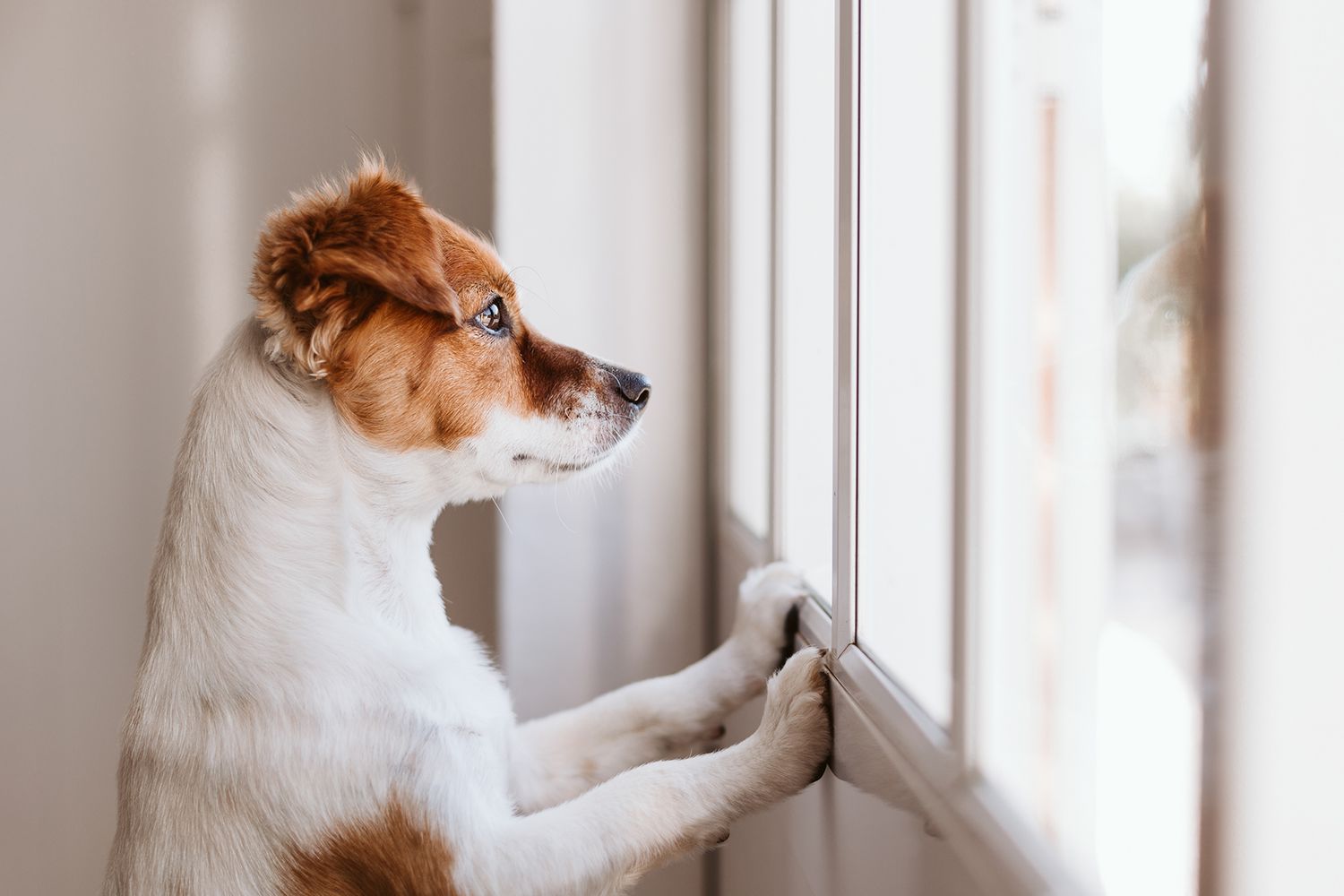https://www.bhg.com/syndication/average-amount-pet-owner-spends-each-month/
The transition will be an adjustment, but there are simple steps you can take to ensure your dog or cat is comfortable without you.
After more than a year of working from home, many companies are beginning to welcome employees back into the office. Although you might be excited to see your co-workers again, your furry friend will definitely miss you, especially if you adopted your pet during the pandemic, as they're used to having you around all the time. But luckily, there are a few things you can do as an owner to make sure your dog or cat will be comfortable without you. (But they might give you those puppy eyes when you leave.) Here's what experts recommend to prepare your pet for the new normal to keep them happy and ensure you don't feel guilty for going to work.
Leave the House Without Your Pet
Even if you just leave the house for a quick 5-minute walk, try and get outside without them, so they don't get a false sense that you're home all day, says Sue Bell, founder of Homeward Trails animal rescue in Arlington, Virginia. When you go, try and vary your pattern. "If you follow the same routine, your pet may pick up on this and notice those departure cues: the sound of your keys, putting on shoes, or grabbing a bag," says Jamie Richardson, DVM, chief of staff for Small Door Veterinary in New York City. Mix things up so your pet doesn't associate these signals with you leaving and, subsequently, anxiety. Richardson says to try not to hype them up (as hard as that sounds) when you're going or returning as it can make them even more anxious.
Create a Safe Space for Them
For dogs, both Bell and Richardson highly suggest crate-training them. "A crate provides a safe space for your dog to retreat to when they are anxious," Richardson explains. Once you've trained them, have your pup go into the crate for varying lengths of time during the day to desensitize them. "If they only go in [the crate] when you leave, they're going to get anxiety," Bell explains. Cats don't like crates, but they do want an area all to themselves. "Cats enjoy a quiet, darker space, tucked away from busy areas of the home," Richardson says.
Give Them Something to Do
When the owner is away, the pet should play. "Mental stimulation will help keep your pet busy while you're away," Richardson says. For dogs, try a feeding puzzle, such as Outward Hound Fun Feeder ($16, Chewy). Another recommended option is a Kong Toy ($11, Petco). For cats, Richardson likes the Indoor Hunting Feeder ($20, Doc. & Phoebe's Cat Co). Giving them a special treat or another high-value reward that they don't often receive could also do the job, Richardson says.
Talk to Your Vet
If your pet is showing signs of extreme anxiety, such as excessive barking, destructive behavior, urination or defecation in inappropriate places, or over-grooming, don't ignore it, and don't punish them. "Punishment is ineffective and only increases your pet's stress levels," Richardson says. Instead, call your vet. She says they might recommend a ThunderShirt ($45, Chewy), or an Adaptil Calming Collar ($15, Chewy), for dogs. The Feliway Plug-In Diffuser ($29, Chewy) is an excellent choice for cats. Anti-anxiety medication might also be an option.
If you're a new pet parent struggling, or maybe your pet's separation anxiety is getting worse, know that help is available, Richardson says. Along with talking to your veterinarian, consider hiring a trainer or finding training classes that are free or low-cost. (Animal Care Centers of New York City is just one organization around the country that can help owners find affordable training options.) If you previously had a dog walker, pet sitter, or playgroup, see if they can be of assistance. Above all else, just remember that this transition is temporary, and both you and your pet will get through it.


 Headed Back to the Office? Here's How to Help Your Pet Cope
Headed Back to the Office? Here's How to Help Your Pet Cope
